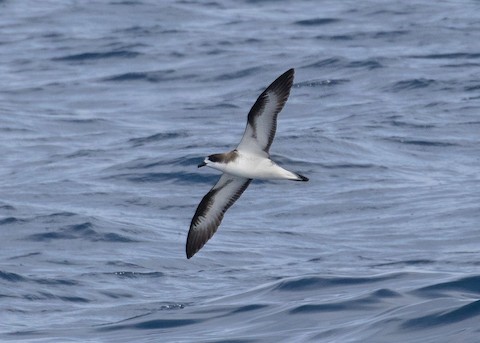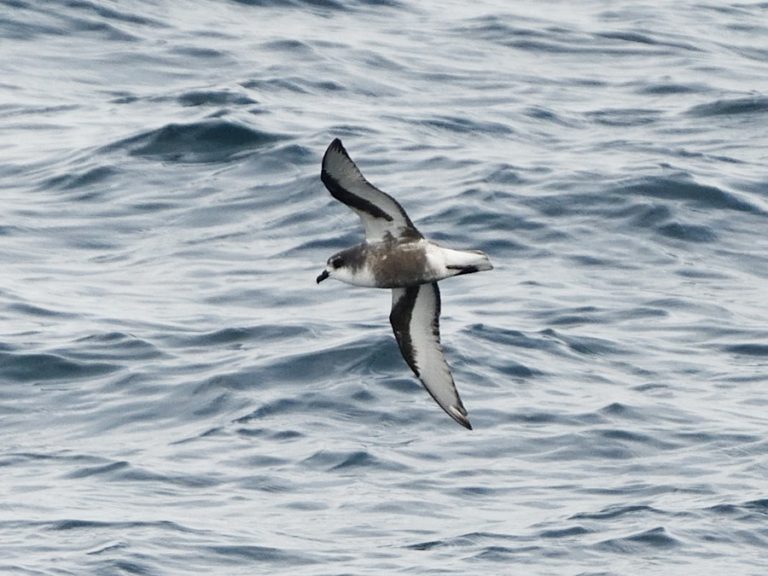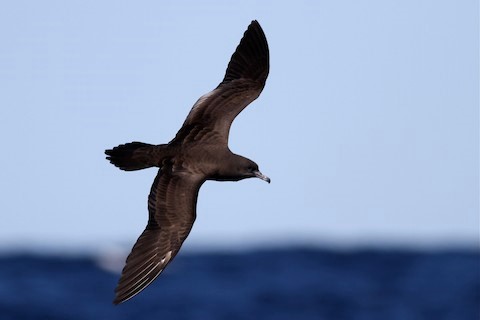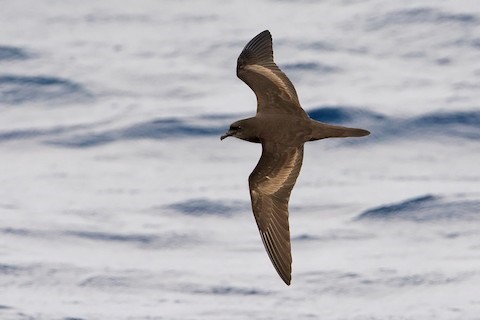Wai’anae, Oahu, Hawaii (Offshore Waters)

Hawaiian pelagic birdwatching remains under-developed, with abundant possibilities. Offshore from Wai’anae, the distance to the deep ocean is just one to two miles, readily accessible to visitors. The limited available information suggests that at least fifteen species of tubenoses occur regularly: including five Pterodroma petrels (Black-winged, Cook’s, Mottled, Juan Fernández, and Hawaiian), as well as Bulwer’s Petrel, and five shearwaters (Wedge-tailed, Sooty, Short-tailed, Christmas, and Newell’s).
Orientation
Directions
Wai’anae is on the western shore of Oahu, about an hour’s drive (35 miles) west of Honolulu, or 45 minutes (29 miles), from Hawaii’s largest airport, Daniel K. Inouye International.
To reach Wai’anae Small Boat Harbor from the airport, take the main freeway, H1, north (away from Honolulu) and remain on it as it winds west around Pearl Harbor. Shortly after passing Kapolei, the H1 freeway narrows and joins Highway 93, then bends north along the western coast of Oahu.
About ten miles farther on Highway 93, just past the center of Wai’anae (village), turn left at Wai’anae District Park, which includes the harbor.
Attractions
The trail up Mount Ka’ala, the highest point on Oahu, begins about four miles east of Wai’anae, at the end of Wai’anae Valley Road.
The southern trail to Ka’ena Point begins at Yokohama Bay, just beyond Keawaula Beach, about eight miles north of Wai’anae, at the end of the Farrington Highway.
Birdfinding
Along the western coast of Oahu, the seabed slopes down below typical continental shelf depths (<100 m) about one-and-a-half to two miles from shore. Pelagic birdwatching is therefore possible in almost any seaworthy craft—even a hand-paddled kayak, for those with sufficient training and ability.
Both diversity and numbers presumably peak during the transitional seasons when many populations migrate between the hemispheres, roughly March-April and September-October. Many of the locally breeding seabirds also arrive around March and depart around October.

Hawaiian Petrels that breed on Kauai likely visit Oahu’s western waters. © Ken Chamberlain

The following species are annual, or at least fairly regular, in the waters offshore from Wai’anae:
Yellow-billed Tropicbird: uncommon year-round
Red-tailed Tropicbird: uncommon March-September
Laysan Albatross: uncommon year-round
Black-footed Albatross: uncommon December-May
“Hawaiian Storm-Petrel”: rare April-November
Leach’s Storm-Petrel: uncommon March-April
Black-winged Petrel: uncommon March-November
Cook’s Petrel: rare June-November
Mottled Petrel: uncommon March-April and October
Juan Fernández Petrel: rare April-October
Hawaiian Petrel: uncommon April-November

Black-winged Petrel visits Hawaiian waters year-round, but is most common in September and October. © Hiroyuki & Shoko Tanoi

Mottled Petrel passes through Hawaiian waters northbound in March and April and southbound from late September to November. © Hiroyuki & Shoko Tanoi
Bulwer’s Petrel: fairly common April-October
Wedge-tailed Shearwater: very common March-November
Sooty Shearwater: fairly common March-April and September-October
Short-tailed Shearwater: rare September-December
Christmas Shearwater: rare March-October
Newell’s Shearwater: rare April-October
Great Frigatebird: fairly common March-September
Red-footed Booby: fairly common year-round
“Forster’s Booby”: fairly common year-round
Masked Booby: uncommon March-October

The Wedge-tailed Shearwater is the commonest tubenose in Oahu’s waters. © Chris Wiley

The Hawaiian endemic Newell’s Shearwater is a rare visitor to Oahu’s western waters from April to October. © Jacob Drucker
Red Phalarope: rare December-April
Long-tailed Jaeger: rare April-May
Parasitic Jaeger: rare April-May
Pomarine Jaeger: rare October-April
Common Fairy-Tern: fairly common year-round
Sooty Tern: common March-November
Gray-backed Tern: rare March-October
Brown Noddy: fairly common March-November
“Hawaiian Noddy”: uncommon year-round
One tour operator based in Wai’anae specializes in nature-oriented offshore excursions: Wild Side Specialty Tours (reservations@sailhawaii.com; 1-808-306-7273). They offer three-hour trips up to twice daily, with morning departures at either 7:00 or 8:00 and midday departures at either 11:15 or 12:15. Their standard rates are about $200 per person or $1200 to reserve the whole boat as a private charter. Board at Wai’anae Small Boat Harbor, 85371 Farrington Highway.
Another option is to take an organized snorkeling trip. These tend to remain near the shore where the reefs are. A local snorkeling tour operator in western Oahu is Ko Olina Ocean Adventures, (reservations@koolinaoceanadventures.com; 1-808-396-2068). Board at Malakole Harbor, 92-100 Waipahe Place, Kapolei.

Bulwer’s Petrel is fairly common in Oahu’s western waters during the breeding season from April to October. © Miguel Rouco
The other standard alternative is to go on a fishing charter. These trips are generally likely to go to productive offshore waters, and thus may create opportunities to see pelagic birds, but they are hit-or-miss. Most fishing charter captains have game-plans that combine a few proven approaches for certain fishes in that area at that time of year, and they know where the fish have been biting recently. With fuel and time being precious, it is difficult to persuade a fishing charter captain to deviate from the game-plan.
Services
Accommodations
There are two large resort hotels at Ko Olina, about eight miles south of Wai’anae. They are about equally expensive:
Aulani, a Disney Resort & Spa, Ko Olina, 1-866-443-4763
Four Seasons Resort Oahu at Ko Olina, 1-808-679-0079
Food
For trips out of Wai’anae Small Boat Harbor, Spinners Café (1-808- 696-3474) is conveniently adjacent.
Notes
When to Visit
Maximum diversity on pelagic trips in Hawaiian waters is generally expected in March, April, September, and October.
Hazards & Hassles
As with any other offshore boatride, visitors should prepare for a wide range of conditions by bringing: multiple layers of clothing (including an outer layer suitable for rain or seaspray), soft-soled shoes, sunscreen, sunglasses, and their favored seasickness prophylaxis.
Links